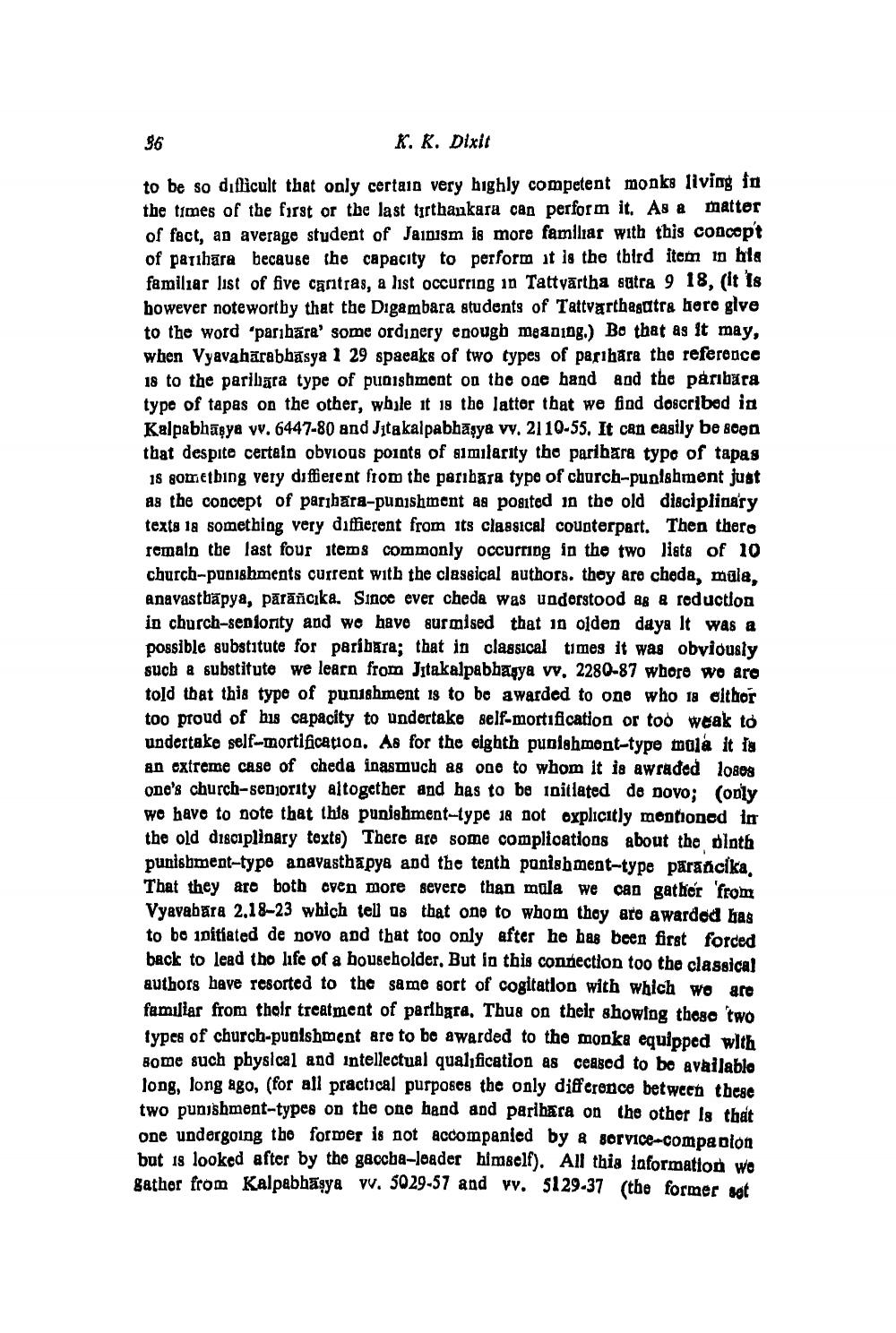________________
K. R. Dixit
to be so diflicult that only certain very highly competent monks living in the times of the first or the last tirthaukara can perform it. As a matter of fact, an average student of Jainism is more familiar with this concept of parihara because the capacity to perform it is the third item in hla familiar list of five cantras, a list occurring in Tattvārtha sutra 9 18, (It Is however noteworthy that the Digambara students of Tattvarthagutra here glve to the word "parıbāra' some ordinery enough meaning.) Bo that as it may, when Vyavahārabhasya 1 29 spaeaks of two types of parihara the reference 18 to the paribara type of punishment on the one hand and the paribara type of tapas on the other, while it is the latter that we find doscribed in Kalpabhagya vv. 6447-80 and Jitakalpabhāşya vy, 2110-55. It can casily be doen that despite certain obvious points of almilarity tho paribara type of tapas is sometbing very diffierent from the paribara type of church-punishment just as the concept of paribāra-punishment as posted in the old diaciplinary texts 1a something very diffierent from its classical counterpart. Then thero remain the last four items commonly occurring in the two lists of 10 church-punishments current with the classical authors. they are cheda, mula, Anavastbäpya, parāñcika. Since ever cheda was understood as a reduction in church-seniority and we have surmised that in olden daya It was a possible substitute for paribara; that in classical times it was obviously such a substitute we learn from Jitakalpabhagya vv, 2280-87 whore we are told that this type of punishment is to be awarded to one who is elthor too proud of his capacity to undertake self-mortification or too weak to undertake self-mortification. As for the eighth pupishmont-type malá it is an extreme case of cheda inasmuch ag ono to whom it is awraded loses one's church-senjority altogether and has to be initiated de povo; (only we have to note that this punishment-type 1& not oxplicitly montioned in the old disciplinary texts) There aro some complioations about the oloth punishment-type anavasthapya and the tenth panishment-type pärancika. That they are both oven more severo than mula we can gather from Vyavabara 2,18-23 which tell 08 that one to whom thoy are awarded has to be initiated de novo and that too only after he has been first forced back to lead tho life of a householder. But in this connection too the classical authors have resorted to the same sort of cogitation with which we are familiar from their treatment of paribara, Thus on their showing those two types of church-punishment are to be awarded to the monka equipped with some such physical and intellectual qual¡fication as ceased to be availablo long, long ago, (for all practical purposes the only difference between these two punishment-types on the one hand and parihara on the other is that one undergoing the former is not accompanied by & service-companion but 18 looked after by the gaccba-loader himself). All this information we gather from Kalpabhasya vv. 3029-57 and vv. 5129-37 (the former sat




